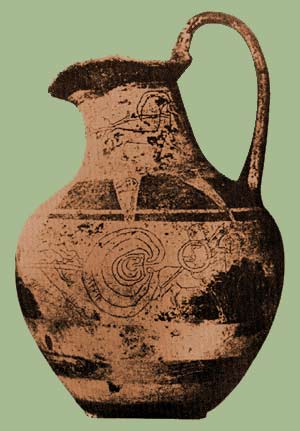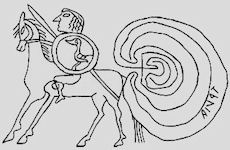As files in the three squadrons all in line
Turned away, cantering left and right; recalled
They wheeled and dipped their lances for a charge.
They entered then on parades and counter-parades,
The two detachments, matched in the arena,
Winding in and out of one another,
And whipped into sham cavalry skirmishes
By baring backs in flight, then whirling round
With leveled points, then patching up a truce
And riding side by side. So intricate
In ancient times on mountainous Crete they say
The Labyrinth, between walls in the dark,
Ran criss-cross a bewildering thousand ways
Devised by guile, a maze insoluable,
Breaking down every clue to the way out.
So intricate the drill of Trojan boys
Who wove the patterns of their prancing horses,
Figured, in sport, retreats and skirmishes
(Aeneid, V. 5.580–593 Translation by Robert Fitzgerald)
Vergil conjured the image of the Lusus Troiae when writing in the 1st century CE, but there is archaeological evidence of its existence dating from the late C7th BCE. The Tragliatella Vase discovered near the Etruscan city of Caere (modern Cerveteri) depicts two horsemen emerging from a spiral marked with the word ‘Truia’. A line of marching warriors is also displayed on the wine jug which seems to suggest that the vase portrays a military ceremony similar to the one in the legend. As the Romans were heavily influenced by the Etruscans, it is plausible that the equestrian ceremony that was later referred to by Vergil was in fact an Etruscan tradition.
She clapped loudly. “The boy has talent.”
I hope you’ve enjoyed reading about my wonder of Rome. A big thank you to David Pilling for organising the hop – now click on the links below and read much, much more. (And apologies for the double entry for my blog – technical hiccup!)
In addition to the links below – you can also find posts from Scott Hunter and David Blixt.







Leave a Reply